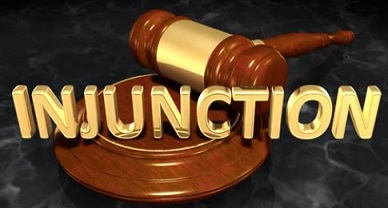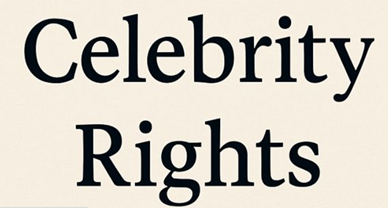Dynamism and dilemmas: Navigating the evolution of dynamic injunctions
Introduction
Around 5.18 billion people use the Internet, equivalent to 64.6% of population. Moreover, trends indicated that two-thirds of the world’s population started using the Internet by the end of 2023[i]. In this era, as the use of the Internet grows, digital piracy is becoming more common, affecting millions. Pirated content has become more accessible due to the widespread use of the Internet. Many sites, such as Telegram, circulate newly released movies or series, further giving the unauthorized access to the pirated content. To protect the right of creators, Copyright law was introduced, fostering creative innovation.
Copyright Law and Insufficient Injunctions
The British Statute of Anne, 1710, was the first copyright statute. Initially, this law applied only to copying books, but over time, its application expanded to include photographs, motion pictures, recordings, and more. In India, the Copyright Act of 1957 grants certain rights to creators. Section 55 of the Copyright Act of 1957[ii] provides civil remedies for copyright infringement. It explains that the copyright owner can claim an injunction as a remedy where copyright in any work has been infringed. Even if the person who infringed the copyright proves that they had no reasonable grounds to believe the work was protected by copyright, the owner can still claim an injunction as a remedy.
In India, the statute of the Specific Relief Act of 1963 and The Civil Procedure Code of 1908 deal with injunction orders. Injunctions are granted by ordering intermediaries to take down the URL or website so the infringed material can no longer be accessed. ISPs do take down the websites, but these actions are not helpful because similar content can be accessed on mirror websites or the same websites with different URLs. For example, if “facebook.com” is blocked, you can try accessing it through “fb.com” or “m.facebook.com.”
Evolving Jurisprudence of Dynamic Injunctions.
To combat piracy issues, the concept of a Dynamic Injunction came into existence. It is an order that blocks the present website and extends the injunction order to the mirror versions of these websites. The idea behind it is to stop the circulation of infringed material.
The roots of dynamic injunctions were first seen in the “Court of Justice for the European Union” in “L ‘Oreal v. eBay.” [iii]The issue here was an infringement of L’Oréal’s trademark on eBay. The court ordered the implementation of actions that not only stopped the existing infringement of rights by marketplace users but also prevented any future infringements of a similar nature.
In the famous case of “Disney Enterprises, Inc. v. M1 Ltd,[iv]” the Singapore High Court explicitly granted a dynamic injunction. The plaintiffs were the owners of numerous cinematograph films. The injunction was issued under Section 193DDA of the Singapore Copyright Act. The defendants were directed to block FIOLs (Frequently Infringing Online Locations), including domain names, IP addresses, and URLs. By granting a dynamic injunction, the court aimed to stop specific evasive techniques employed by FIOLs, such as providing infringed material under different URLs. This dynamic injunction eliminated the need for the plaintiffs to repeatedly seek court amendments to the original injunction order. However, the dynamic injunction was subject to a condition that allowed the Intermediary to refuse the blocking request if it believed there were insufficient grounds for blocking. Similarly, the defendants retained the right to contest the request for blocking.
[Image Sources: Shutterstock]
In India, the first instance of a dynamic injunction was granted in the case of “UTV Software Communication Ltd. And Ors. v. 1337X to and Ors[v].” The Delhi High Court observed the impact of digital piracy in both national and international contexts. The Court found that limiting access to websites that violate others’ rights can be done while maintaining a balance between the rights and freedoms of everyone involved. The Court defined rogue websites as those that mainly share content that infringes on intellectual property rights. The Court also observed that piracy of music and film is mostly carried out through rogue websites on the internet. Lastly, the court held that an order of dynamic injunction should be guided by the rule of proportionality.
Recently, a single judge bench of the Delhi high court in “Universal City Studios LLC. And Ors. v. Dotmovies.baby and Ors[vi].”, granted an ex parte ad interim injunction order, further expanding the scope of dynamic injunction to future works. In this case, the concept of Dynamic+ Injunction was introduced, which clearly stated that copyrighted works need to be protected as soon as they are created because the rouge website may upload these works within a fraction of a second, causing irreparable loss to the creators.
It is clear from the above discussion that some of the advantages of a dynamic injunction order are adaptability, efficiency, and power to grant comprehensive relief.
Challenges posed by Dynamic Injunctions
While we have observed numerous advantages of dynamic injunctions, evaluating some of their disadvantages is essential. One notable concern is the potential for over-blocking, where websites may be mistakenly blocked due to their resemblance to the infringing content. This can impede freedom of speech. Additionally, relying on intermediaries such as ISPs to monitor and block infringing content can be challenging and may lead to the abuse of power. Consequently, granting a single injunction order against all websites can be considered unjust and the same was illustrated in the Australian case of “Roadshow Films Pty Limited v Telstra Corporation Ltd.” [vii]
Further, the newly developed concept of Dynamic+ Injunction poses unique challenges. It assumes that whoever files the lawsuit will automatically be the owner of subsequent works that might be infringed. The court has swiftly addressed the potential for disagreement over this ownership by allowing the affected party to seek clarification through a formal application. The Delhi high Court’s attempt to safeguard the right of plaintiff from possible infringement is considerate but further thought is required in context of balancing rights.
Conclusion
In a sea full of numerous unidentified digital pirates, the problem of copyright infringement can no longer be just handled by a traditional injunction. So to handle this issue, the dynamism of dynamic injunctions is desperately needed while keeping in check some of its disadvantages. By extending the reach of injunctions beyond specific URLs to encompass mirror websites and unidentified infringers, dynamic injunctions create a more comprehensive approach to curbing the circulation of infringed material. This shift recognizes the interconnected nature of online platforms and dire need to maintain a balance between the rights of various stakeholders.
Author: ADVIKA SINGH MALIK, in case of any queries please contact/write back to us at support@ipandlegalfilings.com or IP & Legal Filing.
References
- Bali, P., & Malhotra, N. (2020). To Block or Not to Block?: Analysing the Efficacy of Website Blocking Orders and Dynamic Injunctions in Combating Digital Piracy. Indian Journal of Intellectual Property Law, 11, 179-204. https://www.algindia.com/algs-pranay-bali-and-nayantara-malhotra-write-an-article-in-nalsars-indian-journal-of-intellectual-property-law-vol-11/
- Sareen, M. K., & Kalra, K. (2019). DYNAMIC INJUNCTIONS – INTERNET ‘INJUNCTIONS 2.0’. ILI Law Review, II(Winter Issue 2019), 32-63. https://doi.org/2019
- Dixit, P. P. (2020). Dynamic injunctions against internet intermediaries: an overview of emerging trends in india and singapore. Journal of World Intellectual Property, 23(1-2), 65-74. https://onlinelibrary.wiley.com/doi/abs/10.1111/jwip.12140
- Raghunath, A. (2022, August 18). Dynamic Injunction- An effective remedy for IPR infringement?WordPress.com. https://nujsiplaw.wordpress.com/2022/08/18/dynamic-injunction-an-effective-remedy-for-ipr-infringement
- Obhan , E., & Pillai, T. (2020, December 18). India: Dynamic Injunctions To Tackle Digital Piracy In India. Www.Mondaq.com. https://www.mondaq.com/india/copyright/1017874/dynamic-injunctions-to-tackle-digital-piracy-in-india
[i] DataReportal – Global Digital Insights (n.d.). DIGITAL AROUND THE WORLD. Datareportal.com. Retrieved February 27, 2023, from https://datareportal.com/global-digital-overview
[ii] Copyright Act, 1957, S 55.
[iii] L’Oreal v eBay [2009] EWHC 1094
[iv] Disney Enterprises, Inc. v. M1 Ltd, 2018 SGHC 206
[v] UTV Software Communication Ltd. And Ors. v. 1337X to and Ors. 2019 SCC OnLine Del 8002]
[vi] Universal City Studios LLC. And Ors. V. DotMovies.Baby and Ors. [CS(COMM) 514/2023 and IA 14120/2023, 14122/2023]
[vii] Roadshow Films Pty Limited v Telstra Corporation Limited [2020] FCA 507; 151 IPR 449



